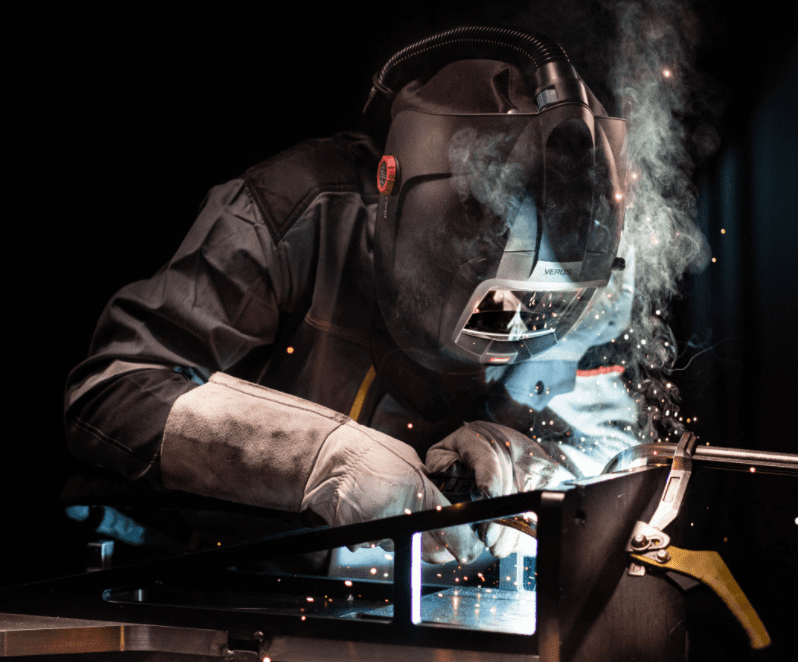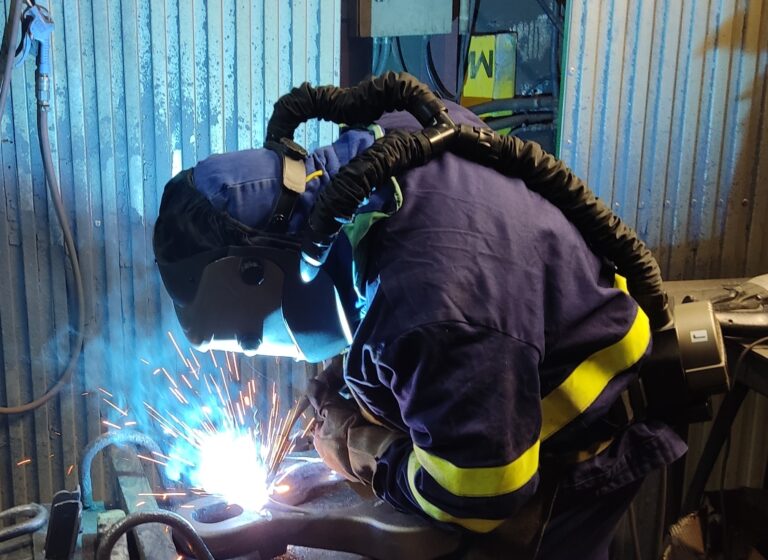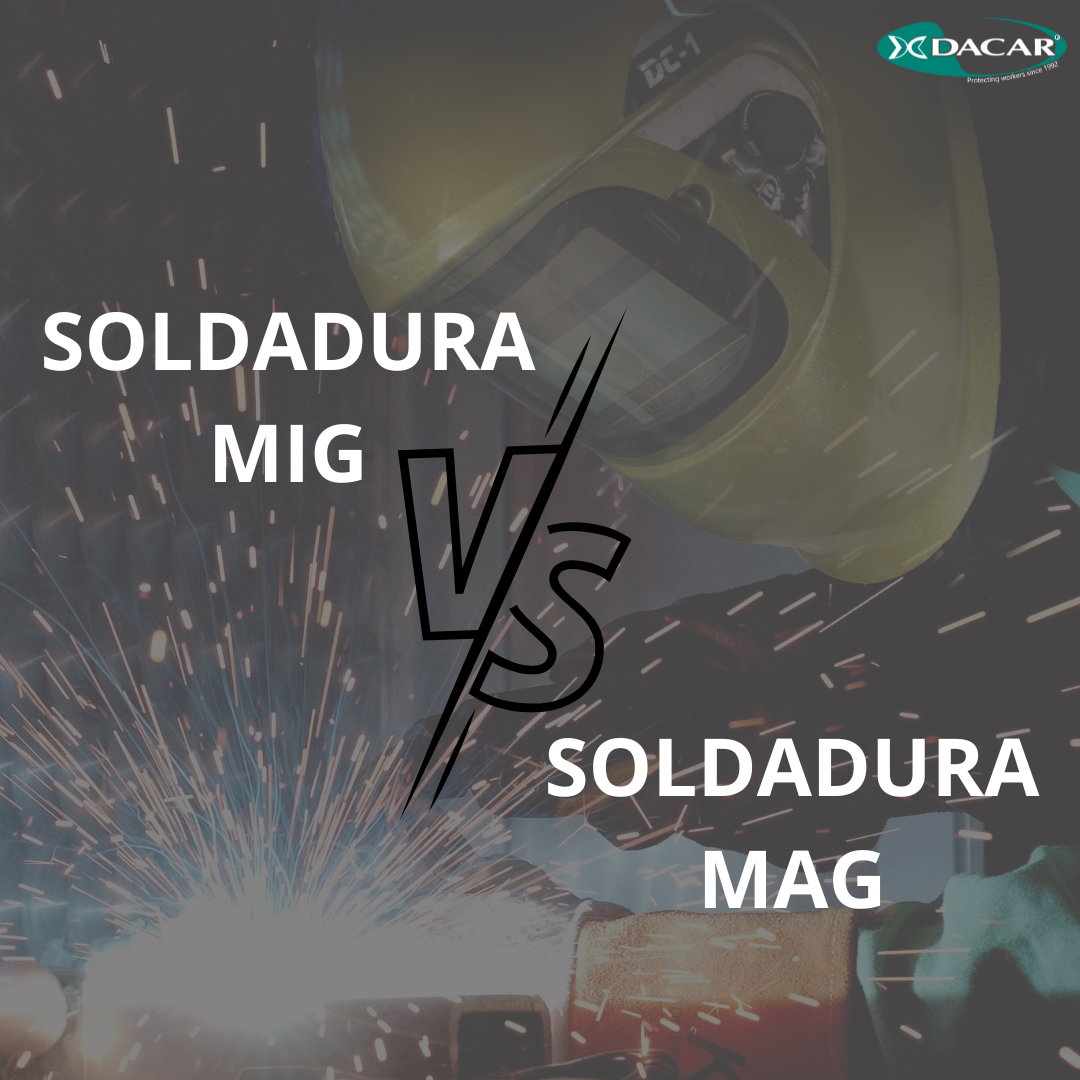In a previous article, we have defined what MIG welding consisted of and for what applications it was most suitable.
On this occasion, we are going to detail the different variants that exist of MIG welding as well as the function of the gas used for that application.
What is the function of the gas in MIG welding?
The gas used for MIG welding is called shielding gas and is typically a mixture of carbon dioxide (CO2) and argon. Argon is primarily used to help establish proper shielding of the welding area and prevent metal contamination from the air. The CO2 and argon mixture is commonly used, but other gases like helium or tri-mix gas (a blend of argon, CO2, and helium) can also be used. The choice of the right gas depends on the type of material being welded and the working conditions.

El carbono dióxido (CO2) and helium are used in the gas mixture to protect the welding area from oxidation and to stabilize the electric arc. CO2 is an economical and widely available gas that provides good weld penetration, while helium is a more expensive gas used in MIG welding to achieve higher welding speed and better weld quality on thicker metals.
However, there is a variant of MIG welding that does not require the use of any gas:
MIG welding without gas
MIG welding without gas refers to a type of welding that uses a metal rod as the filler material instead of gas for shielding against oxygen and nitrogen from the air.
MIG welding without gas is more commonly used in DIY applications and small workshops because it is more cost-effective than conventional MIG welding. Additionally, the welding process is relatively straightforward and easy to learn, making it popular among beginners.

While MIG welding without gas may be suitable for certain applications, it is important to note that it can be less effective compared to traditional MIG welding in terms of weld quality and welding speed. Additionally, MIG welding without gas can produce more spatter and smoke, which can be an issue in enclosed areas.
Advantages and Disadvantages of Gasless MIG Welding
The main advantages of gasless MIG welding are its increased mobility and flexibility since there is no need for a gas tank, and the wire feed cable is lighter and more manageable. It can also be quicker and easier to learn than other welding techniques.
However, one of the main disadvantages of gasless MIG welding is that the protection against oxygen and nitrogen from the air is lower compared to MIG welding with gas. This can affect the quality and durability of the weld, as well as increase the risk of impurities and defects in the welding. Additionally, it may be less efficient on thicker materials or those with high levels of oxygen and nitrogen.
There is also another variant to MIG welding called MAG:
Differences between MIG and MAG welding
MIG welding and MAG welding are two welding techniques that use a consumable electrode and a shielding gas for welding. The main difference between them is the type of gas used in each. MIG welding uses a shielding gas containing carbon dioxide (CO2) and argon, while MAG welding uses a shielding gas containing oxygen and a gas mixture (usually argon, CO2, and helium).
MIG welding (Metal Inert Gas) and MAG welding (Metal Active Gas) are two types of welding processes that use a continuous wire electrode and gas to protect the weld area from air contamination.

Another significant difference between these two welding processes is the amount of heat generated. MIG welding typically generates more heat than MAG welding, which can affect the quality of the weld and the performance of the materials used.
In general, MIG welding is used in applications where a fast and strong weld is required, while MAG welding is used in applications that require a more precise and controlled weld.
Does the welded material influence the choice of MIG or MAG?
Yes, the material being welded is an important factor to consider when choosing between MIG (Metal Inert Gas) or MAG (Metal Active Gas) welding.
In general terms, the MIG process is more suitable for welding non-ferrous metals like aluminum and copper, while the MAG process is more suitable for welding ferrous metals such as carbon steel, stainless steel, and nickel alloys.
However, the choice of the welding process also depends on the thickness and type of the workpiece, the welding position, and other specific application factors.



